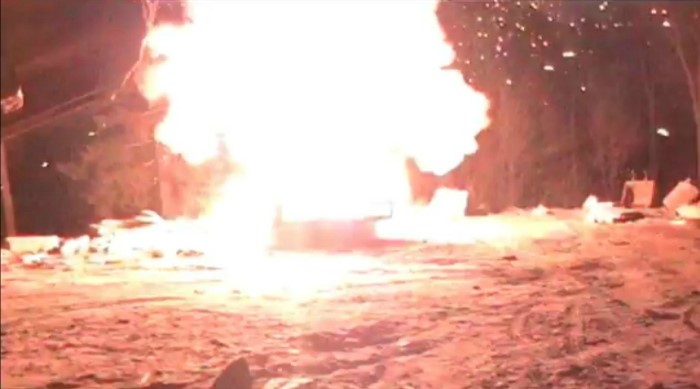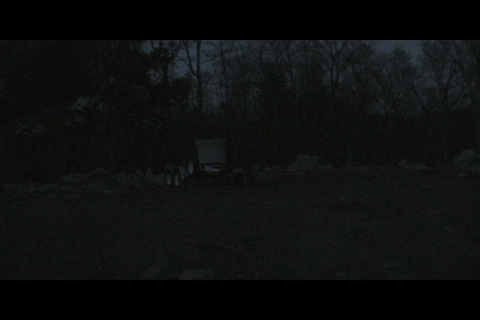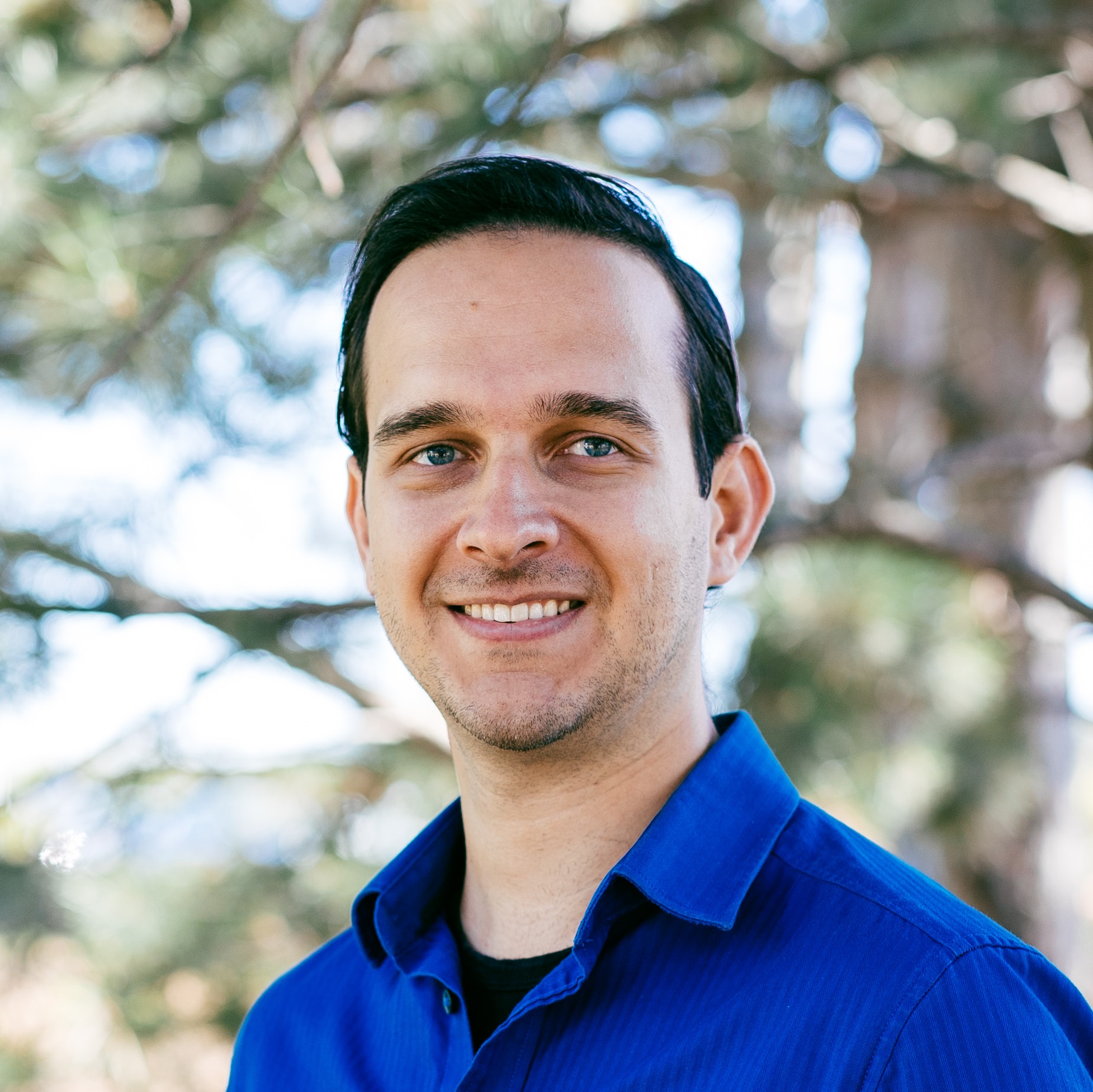
This past year I met a man named Daren Swanson who told me he could create diamonds by packing frozen carbon dioxide (dry ice) into thick metal pipes and blowing them up; a new method he invented called cold detonation physics. These aren’t your typical precious gemstones found in wedding rings, but microscopic nanodiamonds (ND) which have a multitude of different uses. Just about everyone was skeptical, from the many potential investors who kept closing their doors, to the scientists and explosives experts who said it couldn’t be done. Daren’s story, journey and struggles are inspiring to me because they highlight the magic that can happen when people decide to take the road less traveled – the most difficult path against all odds.

Early nanodiamond detonation test
Nanodiamonds are Important
Before I continue with the story, here’s some background on why nanodiamonds are important to us all and why we need a new method of making them.
Nanodiamonds are currently used in various industries. The lapping and polishing industry uses ND as an abrasive for polishing surfaces to a fine degree of uniformity. ND can be added to motor oils to improve the performance of engines by reducing friction. The strength of electrochemical coatings is improved with ND. Various new materials with interesting physical properties, such as polymer composites with thermal conductivity or radiation stability can be created with ND. An exciting area of research focuses on the use of ND as drug delivery vehicles. These can bind to a cancer chemotherapy agent, delivering the drug specifically to cancer cells improving efficacy and reducing side effects. Yes, nanodiamonds could save lives!
Current Methods of Production
There are a number of relatively small ND producers in various countries, such as PlasmaChem, Carbodeon, Ray Techniques, NanoDiamond Products, and TCI among others. The material is created by a number of different processes, such as dry detonation of conventional explosives, laser synthesis, ultrasonic cavitation, microplasma synthesis, high temperature high pressure synthesis, and milling of larger diamonds into smaller particles.
Each process has drawbacks. For example, dry detonation can produce relatively larger quantities at lower cost, but the diamond has inconsistent physical properties and is often contaminated with byproducts from the explosives used to create it, so it’s not safe for medical applications without costly purification steps. Laser synthesis produces purer samples, in much smaller quantities and at higher cost. Milled ND is inexpensive to produce, however; the particles are smooth (think of it like a rock tumbler) and contaminated by the milling media. Milling can’t make particles small enough for medical use and they aren’t as abrasive so they are less effective as polishing agents.
The total market demand for ND is still relatively small but exceeds available supply due to inconsistent quality, small production capacity and high cost. However, this market is projected to grow rapidly. If there were a method of producing very high yields of ND at much lower cost, other industrial applications would become commercially viable. One example is to use ND to increase the strength and durability of coatings in construction materials (floor tiles, shingles, and decorative chrome). The new process Daren has invented may be able to produce higher yields with higher purity, since his explosive formulation doesn’t contain nitrogen which forms impurities in conventional detonation ND synthesis.
The Genesis of the Idea
The idea for cold detonation physics came about while Daren contemplated how he might use chemistry to help solve the problem of rising levels of greenhouse gases. This happened to be during a viewing of Al Gore’s “An Inconvenient Truth” when his wife asked him, “You’re a chemical engineer… can’t you just pull the carbon from carbon dioxide and stack it somehow?”.
He envisioned a reaction where carbon dioxide would detonate, converting that carbon into a crystalline diamond form. How he managed to think of this exceptionally unconventional reaction on the spot is beyond me, but after spending some time speaking with Daren it doesn’t really surprise me. The way he thinks is unconventional to say the least, and I think that’s awesome. I mean, the guy designed an explosive containment system when he was 22, which ended up being used by the Canadian Department of National Defense. And if you should start a conversation with him about the meaning of life or the nature of the universe, your head might explode.
Against All Odds
It took a lot of persistence, but he was able to raise some money to help finance testing of his product at a government explosives research facility in Ontario in 2015. The scientists there probably didn’t expect much, but in the end they agreed that Daren had invented an entirely novel explosive mechanism.
Daren put together a vacuum filtration system to collect the dust and debris which rained down from the explosion for further analysis. He was able to confirm the formation of ND in his samples, along with some additional byproducts which have commercial value. The data from these tests was the validation Daren needed to finally move forward and build a facility. From here, he successfully navigated the difficult, painful and expensive process of patenting his invention. He has been granted patents in 26 countries to date and is continuing with the process to secure more patents.
I want to emphasize here that none of the aforementioned milestones were achieved easily. Most people would have given up a long time ago. Imagine what it’s like when nobody believes you, you’ve run out of money and can’t be sure if or when you’ll be able to get more. Investors want to own the majority of your company due to the risks involved, and know you’re desperate. Daren chose his own path and was able to find some further investment from individuals that shared in his passion and vision.
“Investing in my company can’t be driven by greed. It was founded by good people who focused on helping someone doing something very important that has never been done before. I can’t let them down, and I refuse to grant an investor’s wish to push them all out of the way just to get the money I need. I believe that good people with great ideas have an important responsibility to everyone who supports them along the path to their success and should step up and say no for as long as it takes to find the right investor. Ethics and morals, rather than solely corporate business criteria, must prevail.” – Daren Swanson.
Always Moving Forward
I can’t say for sure if Daren will be successful in commercializing his nanodiamonds, but I am certain he’ll give it all the effort he’s got and then some. There’s still a long way to go, and the next step is financing and building an explosives containment vessel to be used to manufacture high quality product for initial sales orders and further research. For this, he’s launched a crowdfunding campaign on Indiegogo with some pretty unique perks. The raw powder from his explosions is being sold as a high quality polish. The shrapnel from pipe detonations is also being made into unique hand crafted jewelry by his wife. Yes, this guy effectively creates art from the fragments of pipe bombs (note: don’t try this at home!).
I’m grateful that I get to meet so many entrepreneurs and inventors who are passionate about their technology businesses. Through continuous innovation, exploration of new ideas and questioning the status quo, they help to keep us moving forward.
I’d like to state that I am not affiliated with Daren Swanson or Envirodiamond in any business capacity and I was not compensated for writing this article. I felt compelled to tell this story in the hope that it will inspire others as much as it did me.




